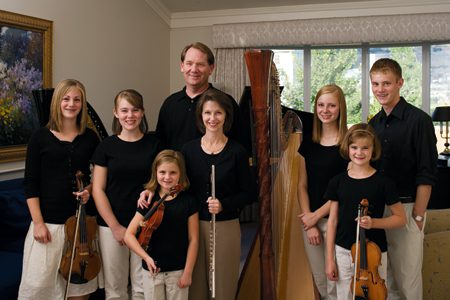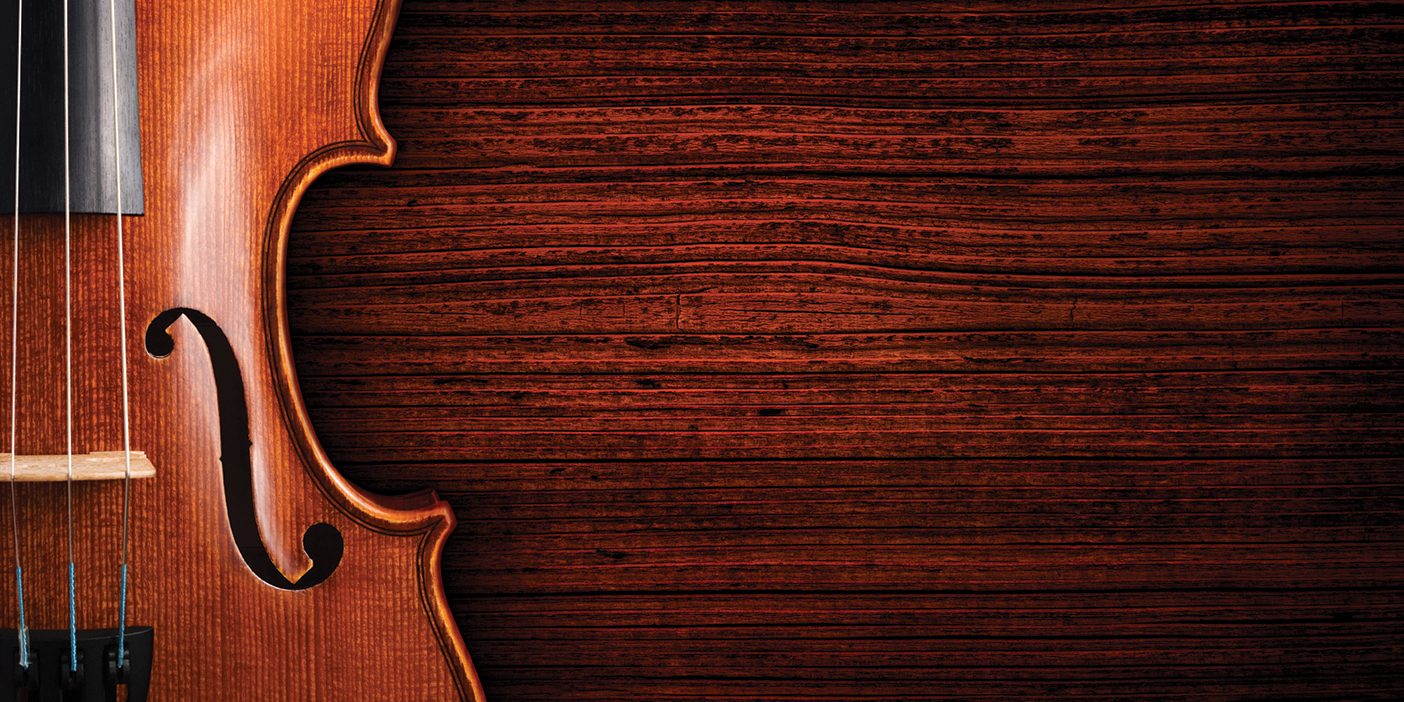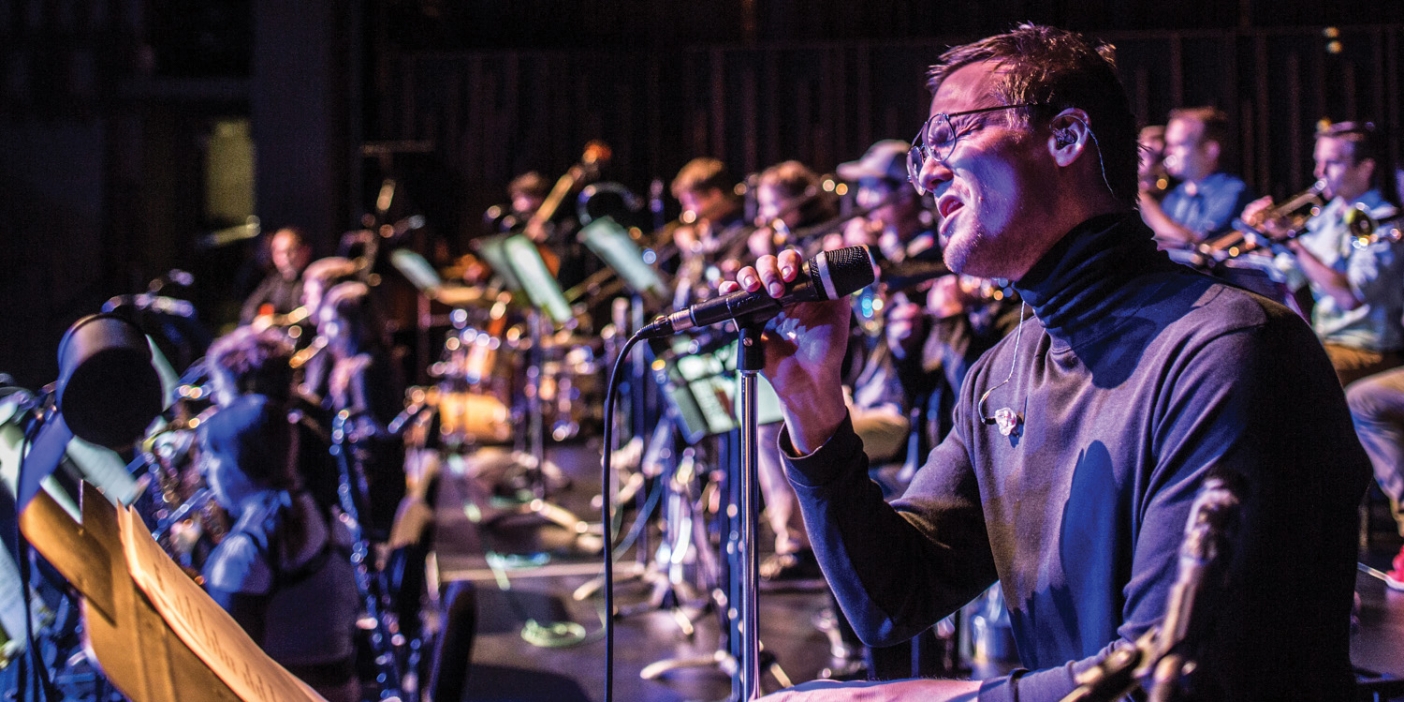By Ashley Baker
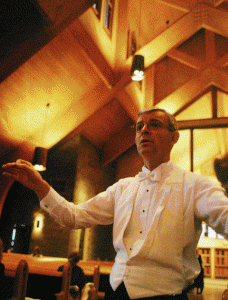
As altos build on strings and oboes complement tenors, a group of BYU musicians prepares an annual offering of the large works of Johann Sebastian Bach. In the process, both performers and audience discover beauty… and truth.
It’s Sunday evening, and the 1,500 or so people who crammed the benches and aisles of Salt Lake’s Cathedral of the Madeleine are quietly filing out. Douglas E. Bush, BYU professor of music, lets out a sigh and smiles. One can’t help but be struck by the ecumenical nature of what just transpired: Bush led 78 students from a Mormon school in a performance of a Lutheran mass in a Catholic cathedral.
The Madeleine is a magnificent place to make music. Sound climbs gently up the walls, gathers at the apex of the 65-foot vaulted nave, and then shimmers down on the listener. Setting aside the visual appeal of the 13 large stained-glass windows, the accoustics of the place delight the ear and, thus, the soul. It’s the kind of place in which great composers can communicate with an audience.
Now, as the performers don coats, greet friends, and pack up instruments, Bush stands in the center of the cathedral and seeks to capture the moment in words.
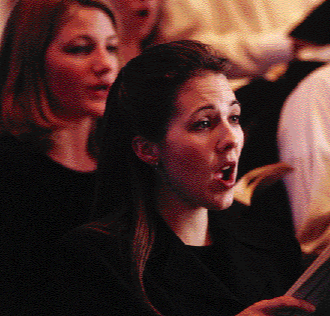
Ashley Baker, a senior from Orem, has a double major in political science and journalism. As a musician, Baker studied organ performance under Douglas Bush for two years.
“The only word I can think of is transcendent,” Bush states quietly. He is looking away, pausing to let the words settle. “The music was written for the church, but it transcends the church somehow.” He pauses again, attempts to form a few words, and finally shakes his head. “I don’t know if there’s anything more I can say.”
Since 1994 Bush’s Early Music Ensemble has been tackling the large works of Johann Sebastian Bach. Bush has led both the St. John and St. Matthew Passions, but the Mass in B Minor remains a favorite; he has conducted it nine times.
All three compositions are immense. The St. John Passion and the mass run two hours each, and the St. Matthew lasts three. The St. John involved 45 performers; the mass, 78; and the St. Matthew, 90. Last March the ensemble gave back-to-back performances of the St. Matthew Passion in Provo and Salt Lake City. This year they performed the mass on three consecutive nights in Park City, Provo, and Salt Lake City, drawing more than 2,000 people.
In his office one day in March, Bush attempts to explain the genesis of his passion for Bach.
“I first heard the Mass in B Minor when I was a missionary in Switzerland. Even though it was way over my head, it was profoundly moving to me,” Bush explains. As he pauses, one imagines a 19-year-old Montana farm boy sitting in a cathedral thousands of miles from home, astounded as the crowning work of mighty Bach unfolds. “Each time I come to it, I am filled. The more I learn about it, the more I learn from it, the more I learn about my faith, and the more I appreciate what God has given each of us,” Bush says.
Bush says his desire to perform these large works of Bach took shape about the time he joined the BYU faculty in 1978. Together with some friends Bush formed the Utah Bach Choir. The choir survived until Bush was called to be part of a stake presidency in 1985. “I just had too many irons in the fire,” Bush says. Despite its brief existence, the Utah Bach Choir was no patty-cake; the choir performed both the mass and the St. John Passion as part of the Temple Square Concert Series.
But the Utah Bach Choir had only whetted Bush’s desire, and when a few students told him they wanted to perform the Mass in B Minor, Bush and the students wasted no time in organizing the Early Music Ensemble, an orchestra and a choir that give two major performances each year.
When the ensemble was formed in the fall of 1993, Bush had concerns about how audiences would respond to these large, complex works. “First, all three–the mass and both passions–are in a foreign language. Second, the music itself is remarkably complex.” Bush pauses, mulls his words carefully, and then leans forward in his chair, looking as if he has captured what he wants to say. “When you really love something, you wonder if others will love it in the same sort of way you do. You wonder if they will share your enthusiasm for it.”
Looking back, it seems that Bush’s concerns were unnecessary. People from all backgrounds have been turning out in droves to hear the music, and they are being moved by it. By Bush’s request, there is no applause at the conclusion of a performance. Simply put, the sacred nature of the works makes applause sound cheap.
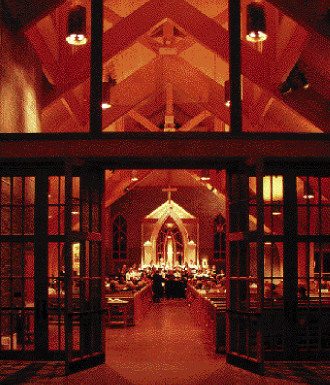
The Church of St. Mary of the Assumption in Park City, Utah, provided a rustic setting for the first of this year’s performances. A small audience and a chilly night culminated in an intimate experience between performer and listener.
The audience, however, is not entirely silent, and Bush receives praise from many corners. “A common theme among the responses has been, ‘I’ve never heard anything like this before. I was moved more deeply than I have ever been moved before,'” Bush explains. “I remember one young man who had attended nothing but rock concerts to that point in his life. After the performance he came to me and said that listening to the mass was the most profoundly moving experience he had ever had.”
In a letter sent shortly after the ensemble’s first performance of the mass in 1994, Frederick R. Hinckley Jr. of Kaysville, Utah, wrote:
“Could what I experienced last night be possible?…’With love’ is the best way to describe your performance…. The sound was balanced, intimate and transcendent… . I can’t tell you how much I commend and congratulate you on one of the most memorable musical experiences of my life–and I’ve witnessed some of the twentieth century’s greatest, both in this country and Europe. How fortunate those young people are to have been associated with you.”
“I think the major contribution here is for performance firsthand,”says Mormon Tabernacle organist Bonnie Goodliffe, who has witnessed several of the ensemble’s performances. “In many schools’ curricula, the great works are studied in the abstract, which is quite different from performing. You simply cannot appreciate the genius of Bach without creating it. Doug’s great contribution is that he has given these performers, who are young and relatively inexperienced, a shot at the greatest choral works ever written. I envy the students who get to do this.”
The students seem to realize their good fortune at participating in Bush’s ensemble.
“I have been amazed at Bush. He understands the music and the composer so well that he knows exactly what to do with the music, and he helps you understand the meaning of it,” says Jon Larsen, a senior from Blackfoot, Idaho, majoring in mechanical engineering. Larsen joined the ensemble’s chorus after a friend and fellow mechanical engineering major encouraged him to audition.

Listeners, including philosophy assistant professor James Siebach (right), anticipate the evening’s performance in the Provo Tabernacle. The semester of the performances, Siebach and Bush joint-taught an honors class dedicated entirely to Bach’s Mass in B Minor.
“Doug’s aim is to help people mature their musical knowledge. He helps you see what’s out there, then gives you something that has a lot of depth and demands more participation than listening. It becomes a voyage of discovery,” says Allison Coutts, an alto in the ensemble and an assistant editor for the Foundation for Ancient Research and Mormon Studies (FARMS).
This voyage of discovery was enhanced in winter semester 1998 by an honors class on the Mass in B Minor, joint-taught by Bush and philosophy assistant professor James Siebach. About 20 students, including a few members of the ensemble, registered for the class.
“I love Bach, but the class has exceeded my expectations,” says Jared Dong, a sophomore from Sandy, Utah, majoring in piano performance. “Even though Bach was Lutheran, his fundamental belief in the Christ linked me to him somehow. The two things that matter most in my life–religion and music–overlapped in this class.”
According to Dong, the class began by studying Christian doctrine, moved to exploring how Bach’s theological background shaped his music, and then jumped right into learning about the mass itself.
“We’ve dealt with musical truth and what constitutes beauty. The class raised the point that there are certain things that can be expressed musically that can’t be expressed in other ways,” Dong says.
Born in 1685, Bach was among the composers of the baroque artistic period.Marked by complex forms, drama, movement, and tension, baroque music often stops the listener at its surface. However, as Siebach explains, its philosophy is more than mere musical aesthetics. “A baroque musical assumption was that music served to unfold the moral and theological significance of a text. It’s one thing to understand the meaning of a sacred text rationally–it is another thing to feel that same meaning.”
When Martin Luther broke with the Catholic Church, he took with him a fierce conviction that music was central to worship. He said that, “Next to the word of God, the noble art of music is the greatest treasure in this world” (The Complete Works of Martin Luther, [St. Louis: J. Pelikan, 1986], vol. 53, p. 321).
“The mass represents worship,” says Coutts. “The words of the mass are a comfort. The words of the mass put the listener in a frame of mind to worship. They are not words you would use in everyday conversation. They represent sacred thoughts and actions.”
Certainly Bach was not trying to entertain with the Mass in B Minor. “People might look at this as concert music. Bach did not perceive it like that,” Bush explains. “He did not write to appeal to people. That was the very last thing on his agenda.”
“He wants to get us out of our aesthetic chains to kneeling before the cross,” Siebach summarizes.
Whereas the mass is a sort of theological summary, the passions tell the story of the Passion of Christ, the time between the last supper and the laying of Christ’s body in the tomb. According to Bush, the St. Matthew Passion, like the gospel on which it is based, is detail oriented and focuses on Christ’s suffering. The St. John Passion, like the gospel of St. John, is more resurrection oriented.
In the mass Bach gave each of the five movements–Kyrie, Gloria, Credo, Sanctus, Agnus Dei–a specific musical and textual message. The Kryie is a supplication for the condescension of God. The basic text of the Gloria is the angelic message to the shepherds at the birth of Christ, praising and renewing the plea for mercy. The Credo is much stricter with a remarkably tight musical structure–fugues, canons within fugues, ostinato–depicting the strictness of the law of God. The Sanctus is based on Isaiah 6:3: “Holy, holy, holy, is the Lord of hosts: the whole earth is full of his glory.” In a gradual crescendo, the Sanctus splits into a six-voice choir and then into an eight-voice choir, bringing the movement to a magnificent finish. The Agnus Dei concludes the mass by proclaiming “blessed is he that comes in the name of the Lord. Lamb of God, who takest away the sins of the world, have mercy on us. Grant us peace.”
“In the Credo I think Bach lived up to the task of making Christ’s death seem the most tragic event in history,” says Barry Hillam, a graduate student from Blackfoot, Idaho, who played the trumpet in this year’s performance. “And then seconds later he lives up to making His resurrection seem the most glorious. I played the mass three years ago, and it was one of the sublime musical experiences of my life.
“This mass leaves it up to the listener to rise to Bach’s level. He’s not trying to meet you on your level, but like any great communicator, he’s trying to raise you to his. There is a lot of effort and exertion–spiritually, mentally, and even emotionally–required by this piece.”
At the beginning of the 1997 school year, 40 people auditioned for 15 slots in the Early Music Ensemble, and after each performance people were coming to Bush asking how they could join.
“This says to me that there is something within people that wants to do this sort of thing,” Bush says.
Perhaps that something only reveals itself musically. Music can evoke joy, remorse, love, gentleness, wrath, or any of a whole range of emotions. It can combine emotions in new and different ways, summoning powers that, until then, have been gathering dust. In a word, it is a friend. As one chooses friends, one also chooses music, and that choice can have a profound effect, as Bush says it has had for him.
“Arthur Henry King, BYU emeritus professor of English once said, ‘We need to read because it’s important to spend time with minds greater than our own.’ I have,” says Bush, an organist and self-described Bach-aholic. “Having had the chance to study, work with, and walk with Bach’s mind has stretched me. It has increased my musical awareness, increased my spiritual perception, and increased my musical skills; it has given me a deeper understanding of and appreciation for the Atonement and heightened my awareness of beauty and truth.”








